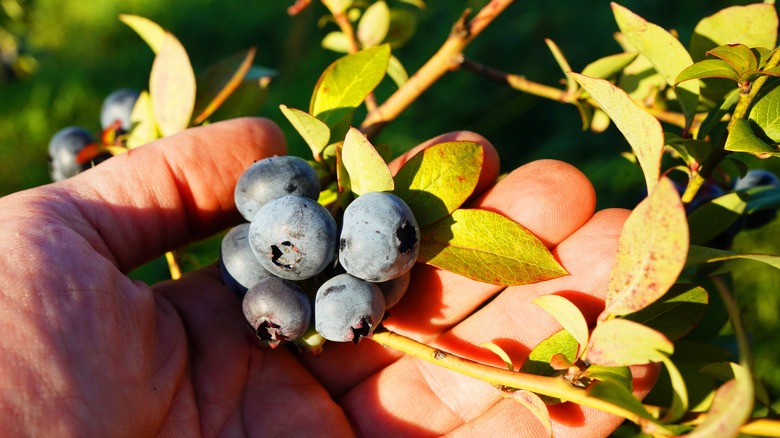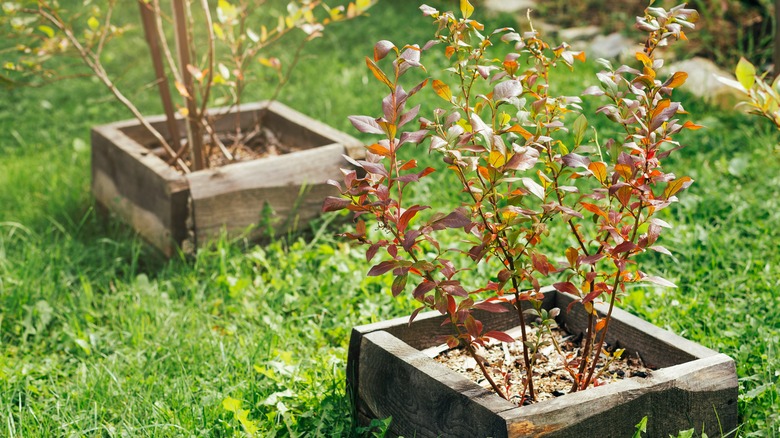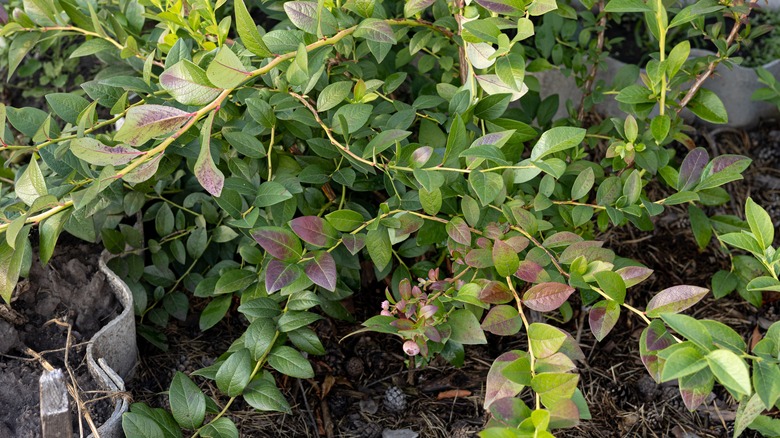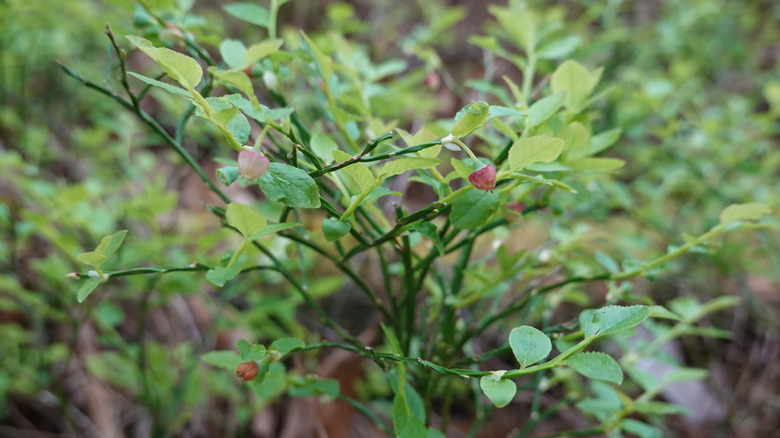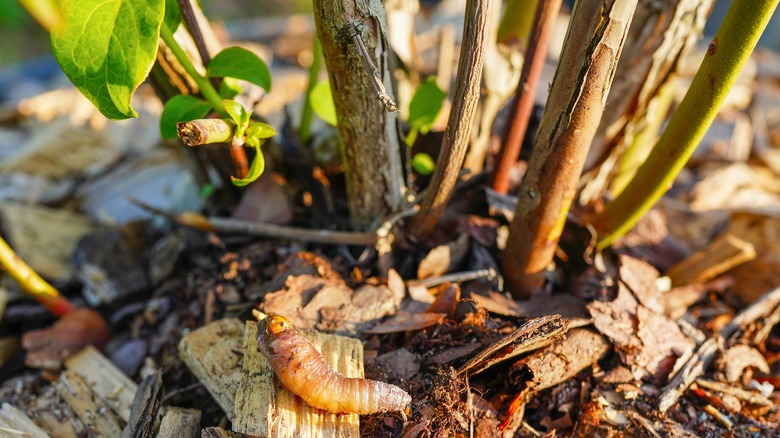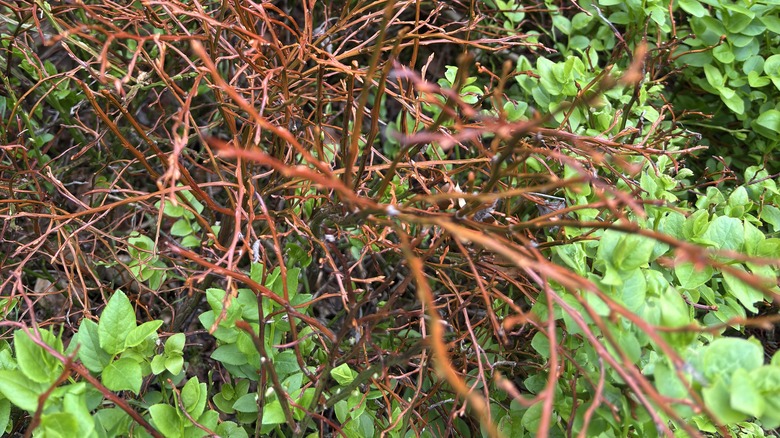8 Signs Your Blueberry Bush Isn't Getting Enough Sunlight
While some people say you can grow blueberries (Vaccinium) in partial shade, these vibrant little berries love the sunlight, and they will let you know it. There are plenty of delicious varieties of blueberries that will thrive in your garden, typically when grown in USDA Hardiness Zones 3 through 9. All of them grow best in full sun, with at least six hours of direct sunlight each day. When blueberries don't get enough sunlight, they start showing it through slowed growth, lower fruit yields, and more.
To avoid issues from a lack of sunlight, start with careful planning as you prepare to grow and care for blueberries. One of the biggest things to consider is how close trees are to the blueberry bushes. You will want to avoid planting blueberries anywhere near trees. Not only do the trees provide too much shade for the blueberries to thrive, but they also limit airflow and compete with the bushes for nutrients and water in the soil. Aside from soil acidity, planting your blueberries in a location with sunlight and open space is the most important factor for maximizing your fruit harvest and promoting healthy growth. If you notice any of the following eight signs that your blueberry bush isn't getting enough sunlight, you may need to move it to a more favorable growing location.
Slow or weak growth
Blueberries are already considered a slow-growing plant, but you need to know where to plant these berries to get enough sun, or they can grow even more slowly. Generally, you won't see the plants grow much bigger each year, but the first year or two should be dedicated to establishing roots and a strong, full canopy of vegetation. This will support the heavy fruit that will start filling the bush in year two or three. However, if the plant doesn't have enough sun, the canopy may not be as full as it needs to be to support the fruit.
Lack of blooms
If you pay attention to the blooming season of your young blueberry bushes, which is usually between spring and summer, you may see signs of low sunlight. Healthy blueberry bushes are filled with blooms by the second or third year and continue to produce more blooms each year after. If you notice that your blueberry bush has few blooms leading into the third or fourth year, or fewer blooms than normal, it could be telling you that you're making a big mistake with your blueberry bush: it isn't getting enough sun during the day.
Poor fruit development
Another indication that your blueberry plant care is inadequate: the bush isn't fruiting. When the berries start filling the branches, plants in partial shade may produce fewer fruits than plants in full sun. When blueberries are in too much shade, they are unable to absorb enough energy to put toward fruiting. Their slow growth habits involve expending energy to develop strong stems with protective foliage, vibrant blooms, and finally healthy fruit. Less sunlight means less energy for each of these processes, leading to lower production overall.
Small berries
Blueberry plants also need full sun to make delicious and healthy berries. When a blueberry plant doesn't have enough sunlight, it may not be able to get enough energy to make large, juicy berries. Instead, you may have a harvest full of smaller berries than expected. When the plant experiences stunted growth in the canes or blooms, it can also stunt the growth of the fruit itself.
Increased pest problems
Your blueberry bush will also show signs that it is not getting enough sunlight through the type of critters it is attracting. Without enough sunlight, the plant may retain more moisture or have less airflow, which can attract unwanted pests. Spotted Wing Drosophila are known to lay eggs inside ripe blueberries. In addition, stressed canes that do not have enough energy to grow properly can be more susceptible to cane-boring pests like flatheaded borers, a damaging beetle.
Weak, leggy new shoots
Pay attention to the new growth of your blueberry plants for signs that they may not be getting enough sun. Sometimes, instead of growth slowing down, you may notice that the new growth isn't as strong as the older branches. They may be weaker and show signs of drooping without cause. Or, they may be leggy, which is when a shoot grows long stems or shoots without any foliage on them. Each winter, remove weak branches when the plant is dormant, but be careful to avoid common mistakes when pruning blueberry bushes.
Disease
Blueberries that don't get enough sunlight are generally more susceptible to disease because they are already expending all of their available energy on growth and fruiting. Since blueberries require acidic soil, they generally don't have problems with wildlife causing damage. Disease, however, can damage plants when there is a lack of nutrients or sunlight. In most cases, you can prune away diseased branches to prevent damage, but you will want to determine and address the root cause so you can make amendments accordingly.
Frost damage
Blueberries are a fruiting perennial that is generally hardy through the winter, which usually means you don't need to worry much about frost. But if your blueberry plant isn't getting enough sunlight, it may not be able to protect itself from harsh winter conditions. As a result, you may begin seeing frost damage on the tips of branches or have issues with spring blooms dying in the cold. This damage could impact the overall health of the plant, along with the yield and quality of the harvest.
